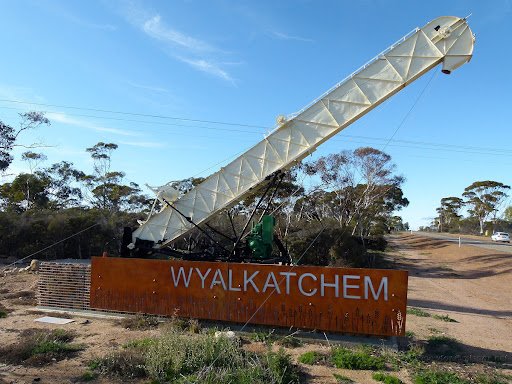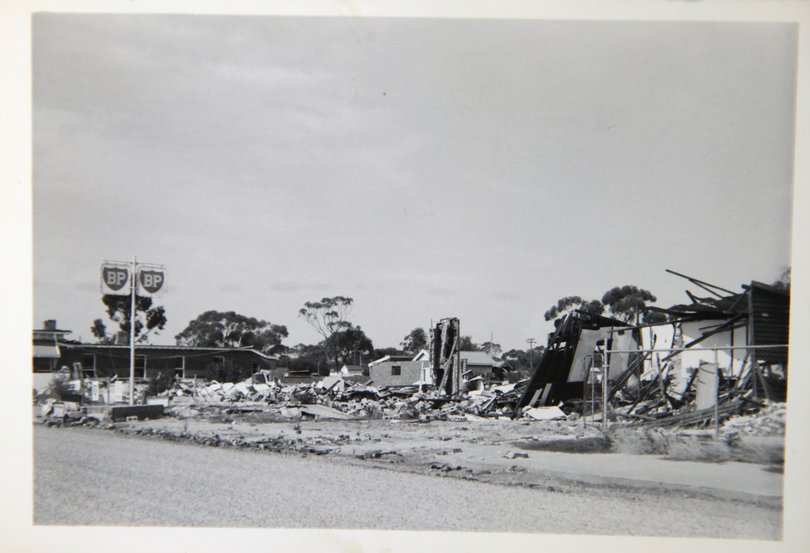4.8-magnitude earthquake recorded in Wheatbelt town, Wyalkatchem

A 4.8-magnitude earthquake has been recorded in a small Wheatbelt town, with tremors felt as far away as Perth.
The earthquake was reported in Wyalkatchem, about 190km north-east of Perth, at a depth of about 1km, about 2am on Wednesday.
Tremors were felt extensively across the State’s south-west and Wheatbelt region, including Northam, Kalgoorlie and Perth, with over 900 residents reporting they felt the tremor.
Sign up to The Nightly's newsletters.
Get the first look at the digital newspaper, curated daily stories and breaking headlines delivered to your inbox.
By continuing you agree to our Terms and Privacy Policy.No damage has been reported.
Geoscience Australian Senior Seismologist Dr Trevor Allen said the Wyalkatchem catchment had recorded more than 130 earthquakes in the past year, including a 4.0-magnitude earthquake on March 27.
He said Wednesday’s incident was the biggest earthquake in the region.
“Prior to today’s event, the largest earthquake in the region was a magnitude 4.5, so this is the certainly the largest earthquake that we have seen in the current sequence in the Wyalkatchem area,” he said.
Wyalkatchem resident Storm Pow said the earthquake woke her and her partner up about 2am and said it lasted about a minute.
“My partner actually thought someone was knocking on the window at first,” she told The West.
“It was pretty big, we’ve had a few (earthquakes) recently, but that one was probably the biggest.”
Ms Pow said she hadn’t seen any damage but said she felt “a little bit frightened”.
“We have pretty old houses around here, so the house was definitely shaking,” she said.
Wyalkatchem resident Paige Dobson described the earthquake as a “loud rumble”.
“I usually sleep through the small ones, but this one could definitely wake up a heavy sleeper,” she said.
“You could feel it through the walls . . . it was a bit shaky.
“Other people felt it and told me about how their pets were going a bit crazy.”
Curtin University Emeritus Professor and structural geologist Chris Elders said Wyalkatchem was located near a fault line.
“There are a lot of very old fault lines within that area that have formed over hundreds and thousands of years,” he told The West.
“When the stress builds up in the crust, the lines of weakness will fail or move or slip.”
He said it was unlikely Wyalkatchem would experience a large earthquake in coming days.
“The fact that there’s been a lot of small earthquakes, suggests that the stresses are being released gradually, rather than building up into a much bigger earthquake,” he said.
“(Wednesday morning’s earthquake) isn’t necessarily signifying that a big earthquake is about to happen, in fact, if anything, it really makes it slightly less likely.”
Professor Elders said localities around Wyalkatchem could expect to feel aftershocks, with at least seven aftershocks already recorded near the township.
The aftershocks are likely to continue over the coming days and weeks.

“(Aftershocks) are very small, they’re sort of a magnitude two or magnitude three ... the sensation is a bit like a big road train driving past on the road,” he said.
“There is very low rumbling and just a little bit of shaking, but nothing much more than that.”
Dr Allen described a 4.8-magnitude earthquake as “relatively strong” but said it was unlikely to cause serious damage.
“It is possible that there might have been some damage to buildings in the area, however, it is quite a remote area, so we wouldn’t expect to see a large amount of damage resulting from this earthquake,” he said.
“Most of the felt effects would probably include items rattling on shelves or windows rattling.
“The earthquake was felt a lot further away in Perth, and people in the Perth area probably would have felt just a relatively minor swaying sensation associated with this because they are further away from the earthquake.”
Dr Allen advised anyone experiencing an earthquake to “drop, cover and hold on”.
“Drop to the ground, cover yourself under a firm table or desk, and hold on until the earthquake stops,” he said.
“This is probably the best advice that we can provide because it’s not always buildings that are falling down or collapsing that cause injuries and fatalities in earthquakes.
“Often times it is non-structural fittings in buildings such as air-conditioning ducts, ceilings and also bookshelves that collapse or fall over and injure people.”
The strongest earthquake to hit the State was a 6.9-magnitude earthquake in Meckering — about 85km south-west of Wyalkatchem — in 1968.

The 40-second tremor destroyed dozens of buildings and injured about 20 people.
Originally published on PerthNow
